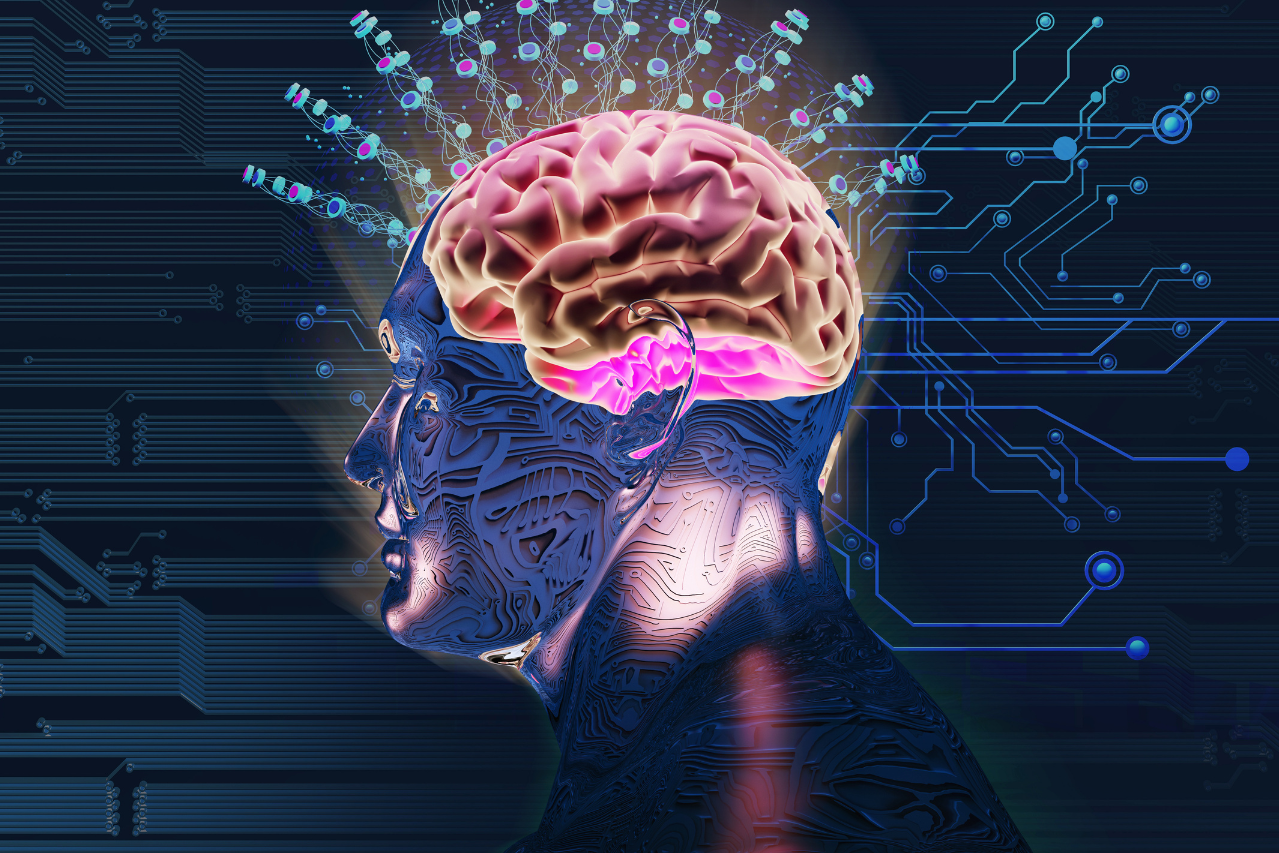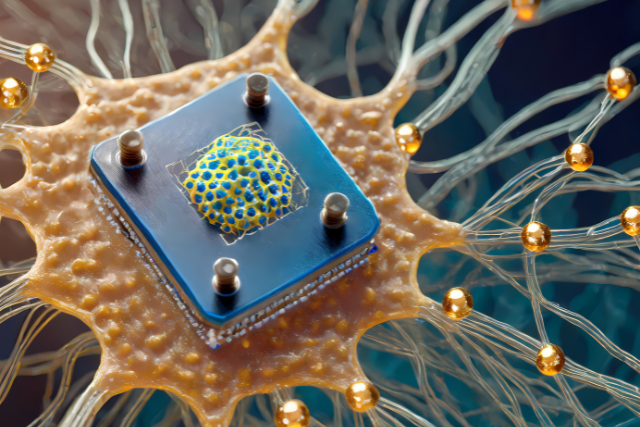Recent advancements in cancer research have unveiled a promising avenue for treating aggressive cancers by targeting extrachromosomal DNA (ecDNA)—circular DNA fragments that exist outside the standard chromosomal structure.
These ecDNAs are prevalent in various hard-to-treat cancers, including glioblastoma, triple-negative breast cancer, and small-cell lung cancer, and play a significant role in tumor growth and resistance to therapy. Understanding and targeting ecDNA could revolutionize treatment strategies for these malignancies.
In a series of groundbreaking papers published in Nature, the Cancer Grand Challenges team eDyNAmiC and their collaborators from the Francis Crick Institute, Stanford Medicine, and University College London (UCL) shared their findings on how ecDNA functions and how it can be targeted for treatment.
This collaborative effort, involving researchers from 13 institutions worldwide, is funded by Cancer Grand Challenges, an initiative co-founded by Cancer Research UK and the National Cancer Institute in the United States.
The Researchers Leading the Charge
The eDyNAmiC team includes renowned scientists such as:
- Dr. Paul Mischel, Professor of Pathology at Stanford Medicine and a pioneer in ecDNA research. His lab first identified the critical role of ecDNA in cancer progression and treatment resistance in 2014.
- Dr. Howard Chang, a co-lead of the eDyNAmiC team, who focuses on epigenetics and RNA biology.
- Dr. Mariam Jamal-Hanjani, an oncologist and researcher at UCL, who studies tumor evolution.
- Dr. Chris Bailey, an investigator at the Francis Crick Institute, whose work explores ecDNA’s impact on the immune system.
Dr. David Scott, Director of Cancer Grand Challenges at Cancer Research UK, emphasized the importance of this work:“Many of the most aggressive cancers depend on ecDNA for survival. By targeting ecDNA, we could cut the lifeline of these relentless tumors, turning a terrible prognosis into a treatable one.”
Understanding Extrachromosomal DNA (ecDNA)
Paper 1: The Biology of ecDNA
The first paper revealed ecDNA’s chaotic nature. In human cells, genetic information is primarily organized within chromosomes. However, ecDNA represents genetic material that exists outside these chromosomes in circular forms. Unlike chromosomal DNA, which is inherited in a predictable manner, ecDNA can be passed down randomly or in groups during cell division. This unpredictability benefits cancer cells by promoting genetic diversity and adaptability.
Dr. Mischel explained the significance of this discovery: “We thought we understood the structure of cancer genomes, but in fact, something very important was missing. The discovery of ecDNA and its role reveals a new layer of complexity in cancer evolution.”
Research indicates that ecDNA often harbors oncogenes—genes that, when mutated or overexpressed, can drive cancer progression. The circular nature of ecDNA allows for high levels of gene expression, contributing to aggressive tumor behavior. Additionally, ecDNA can carry genes that help cancer cells evade the immune system, further complicating treatment efforts.
Paper 2: ecDNA in Clinical Settings
Using data from Genomics England’s 100,000 Genomes Project, researchers analyzed nearly 15,000 cancer samples from 39 tumor types. They found:
- 17.1% of tumors contained ecDNA.
- Higher prevalence in aggressive cancers, such as glioblastoma (43%) and late-stage esophageal cancer (43%).
- Certain mutational signatures, like those associated with tobacco smoking, correlated with ecDNA presence.
Dr. Bailey noted the clinical implications: “We found that, in addition to driving cancer growth, many ecDNAs carry genes that suppress the immune system, possibly helping tumors evade immune detection. This work paves the way for future research aimed at limiting the replication of ecDNA.”
The presence of ecDNA is associated with poorer patient outcomes and increased resistance to therapies, underscoring its role in cancer progression and treatment challenges.

Paper 3: Targeting ecDNA with a Novel Drug
The unique characteristics of ecDNA present both challenges and opportunities for cancer treatment. Researchers have identified a drug, BBI-2779, developed by Boundless Bio, that selectively targets and kills ecDNA-containing cancer cells while sparing normal cells.
BBI-2779 works by inhibiting CHK1, a protein crucial for the replication of ecDNA. In preclinical studies, BBI-2779 effectively reduced tumor growth and prevented resistance to other cancer therapies, marking a significant step toward targeted treatments for aggressive cancers. In preclinical trials on mice, the drug:
- Reduced tumor growth significantly.
- Prevented resistance to other cancer treatments.
BBI-2779 works by inhibiting CHK1, a protein crucial for ecDNA replication. Without CHK1, the fragile replication machinery of ecDNA collapses, leading to the death of cancer cells.
The Role of Artificial Intelligence in ecDNA Research
Artificial intelligence (AI) has been instrumental in advancing ecDNA research. For instance, researchers at the University of North Carolina at Chapel Hill developed CytoCellDB, a database that utilizes AI to classify and analyze ecDNA in cancer. This resource aids in predicting cancer DNA anomalies and enhances our understanding of ecDNA’s role in tumor development and resistance mechanisms.
Additionally, AI-driven tools have been employed to automate the detection and quantification of ecDNA in fluorescence in situ hybridization (FISH) images. Such advancements facilitate the monitoring of ecDNA dynamics during drug treatment, providing a quantitative framework to understand how ecDNA enables cancer cells to adapt to therapeutic pressures.
Implications for Future Cancer Therapies
The discovery of ecDNA’s role in cancer progression and resistance opens new avenues for therapeutic interventions. By targeting the unique properties of ecDNA, it may be possible to develop treatments that effectively combat aggressive cancers and overcome resistance to existing therapies. By targeting ecDNA, researchers aim to:
- Disrupt tumor growth and survival mechanisms.
- Improve the effectiveness of existing therapies, such as immunotherapy.
- Develop precision treatments for cancers previously deemed untreatable.
Dr. Mischel expressed optimism for the future: “Understanding ecDNA is crucial for developing innovative therapies that can outsmart these relentless adversaries. We hope these discoveries will yield benefits for patients with the most aggressive forms of cancer.”
The research spearheaded by the eDyNAmiC team represents a significant step forward in the fight against aggressive cancers. By uncovering the biology of ecDNA and its role in treatment resistance, these scientists have opened the door to a new class of targeted therapies. With the support of AI-driven tools, this groundbreaking work is advancing rapidly, bringing us closer to more effective and personalized cancer treatments.
As we look to the future, the integration of AI, innovative drugs like BBI-2779, and international collaboration will be essential in turning today’s discoveries into tomorrow’s life-saving therapies. This moment marks a turning point in oncology, one that promises hope for countless patients facing aggressive cancers.
Sources
Nature Journal Francis Crick Institute Genomics England Cancer Grand Challenges Cancer Research UK Boundless Bio University of North Carolina BioRxiv Harvard Gazette Stanford Medicine NewsAre you interested in how AI is changing healthcare? Subscribe to our newsletter, “PulsePoint,” for updates, insights, and trends on AI innovations in healthcare.




